Raspberry Pi 400 Specs and More
The good folks over at the Raspberry Pi Foundation are constantly iterating. While its previous-generation Raspberry Pi 2, 3, and 3 B+ looked nearly identical on the surface, steady improvements to the underlying hardware ushered in drastic performance gains. With the advent of the Raspberry Pi 4, the ultra popular single-board computer (SBC) underwent its greatest evolution. Beginning with the RasPi 4, users now had a choice of 1GB, 2GB, 4GB, or 8GB of RAM. Alongside this additional, faster memory, the Pi 4 benefitted from a more powerful processor. Now, the Raspberry Pi 400 offers an alternative to the Raspberry Pi 4. It's similar to the Pi 4 but with a few key differences that make it a fantastic maker board. Learn all about the Raspberry Pi 400 board, from what it is to whether or not you should buy one.
What is the Raspberry Pi 400 Computer Kit?
On the surface, the Raspberry Pi 400 appears to be a keyboard. Indeed, the Raspberry Pi 400 personal computer kit is akin to a Raspberry Pi 4 shoved inside a keyboard. However, it's not quite as simple as that. The all-in-one computer kit utilizes an official Raspberry Pi Foundation keyboard as a case with a Pi 4 crammed inside. It's got 4GB of DDR4 RAM, Bluetooth, Wi-Fi, and a trio of USB ports (2 x USB 3.0, 1 x USB 2.0). There's Gigabit Ethernet, a pair of micro HDMI ports boasting 4K video output capabilities. For the casing, the Raspberry Pi 400 sports the attractive red and white official Raspberry Pi Foundation keyboard. Because the Pi 4 SBC is built into the keyboard, all you'll need to get started is a micro HDMI to HDMI/DisplayPort/micro HDMI cable, mouse, power supply, and a microSD card. Although the SBC itself is built into a keyboard, you'll retain GPIO (general purpose input/output) access so you can hook up accessories such as Pi HATs and cameras.
Raspberry Pi 400 Board Specs
- Broadcom BCM2711 quad-core Cortex-A72 (ARM v8) 64-bit SoC @ 1.8GHz
- 4GB LPDDR4-3200
- Dual-band (2.4GHz and 5.0GHz) IEEE 802.11b/g/n/ac wireless LAN
- Bluetooth 5.0, BLE
- Gigabit Ethernet
- 2 × USB 3.0 and 1 × USB 2.0 ports
- Horizontal 40-pin GPIO header
- 2 × micro HDMI ports (supports up to 4Kp60)
- H.265 (4Kp60 decode); H.264 (1080p60 decode, 1080p30 encode); OpenGL ES 3.0 graphics
- MicroSD card slot for operating system and data storage
- 78- or 79-key compact keyboard (depending on regional variant)
- 5V DC via USB connector
- Operating temperature: 0°C to +50°C ambient
- Maximum dimensions 286 mm × 122 mm × 23 mm
Raspberry Pi 400 vs. Raspberry Pi 4 - What's the Difference
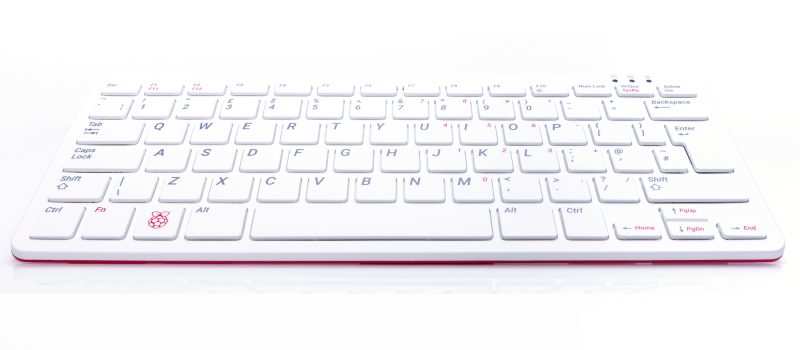
From a cursory glance, the Raspberry Pi 400 board appears the same as its Raspberry Pi 4 cousin aside from the keyboard casing. And the two boards are mostly the same...mostly. The same Broadcom BCM2711 quad-core Cortex A-72 ARM v8 64-bit system-on-a-chip (SoC) as found in the Pi 4 comes standard. However, the Raspberry Pi 400 comes with a higher clock speed out-of-the-box at 1.8GHz instead of the Pi 4's 1.5GHz base clock. You can probably overclock even further for more than 1.8GHz.
There's 4GB of LPDDR4-3200, the same as on the Pi 4 4GB model. Although there's no 8GB model at the time of writing, that four gigs of RAM should be more than enough, particularly when coupled with the Raspberry Pi 400's SoC, for most applications. You're more likely to come up against a processor limit than a memory limit in general use. You also miss out on one USB 2.0 port, but three USB headers should be ample. Despite the higher clock speed, operating systems (OSes) like Raspberry Pi OS won't run any faster. You'll still find similar performance
Raspberry Pi 400 vs Raspberry Pi 4 differences:
- Higher base clock speed on the Raspberry Pi 400 (1.8GHz) than on the Pi 4 (1.5GHz)
- 3 x USB ports (2 x USB 3.0, 1 x USB 2.0) on the Raspberry Pi 400, 4 x USB ports ( 2 x USB 3.0, 2 x USB 3.0) on the Pi 4
- Raspberry Pi 400 only available with 4GB LPDDR4-3200
- SBC built into a keyboard case
Real-world Applications - Raspberry Pi 400 Gaming, Desktop Use, and More
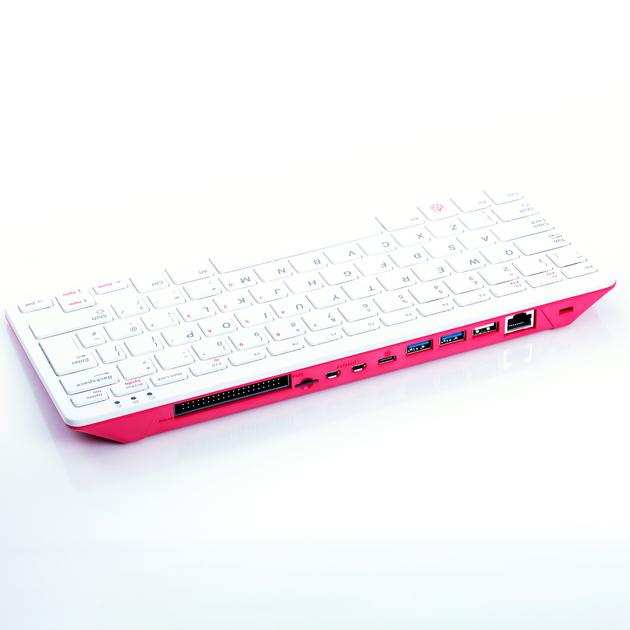
So how does the Raspberry Pi 400 perform in real-world applications? Largely, you won't notice a difference. In benchmarks, the Raspberry Pi 400 clocked in faster 7-zip, memset, and OpenSSL speeds than the Raspberry Pi 4 with a slightly lower memcpy benchmark than the Pi 4 at a base 1.5GHz clock. Since retro gaming emulators rely on CPU power more so than GPU processing, Raspberry Pi 400 emulation performance out-of-the-box might provide slight gains over the Pi 4. As such, Raspberry Pi 400 gaming could be awesome for a self-contained emulation experience. Throw on an overclock to 2.0GHz for instance and you could have a very respectable machine for RetroPie, Recalbox, Lakka, Batocera, or another Pi retro gaming OS. Likewise, you should be able to use the Raspberry Pi 400 as a pretty capable desktop for web browsing, audio recording and editing, and even photo editing using GIMP.
There's one area where the Raspberry Pi 400 proves far superior to the Pi 4: thermal performance. On a bare Raspberry Pi 4, thermal throttling under load can be an issue. As such, a heat sink, fan, case with a cooling solution, or some combination of these is best. However, the Raspberry Pi 400 keeps its thermals low even under heavy loads. That's a major plus for the Pi 400, and a compelling reason to snag one. Overall, performance should be slightly better on a base 1.8GHz Raspberry Pi 400 than the 1.5GHz stock speed Raspberry Pi 4, although it might not be too noticeable. Add an overclock and the Pi 400 might have a slight edge, but again, it's not going to be a night and day difference.
Should You Buy the Raspberry Pi 400?
So now for the real question: should you buy the Raspberry Pi 400? That answer depends on several factors. Let's start with newcomers to the Raspberry Pi platform. If you don't already have a Raspberry Pi, the Pi 400 is a compelling option and arguably the best Raspberry Pi board you can buy. It comes with a keyboard-case combo that's both cost-effective and space-saving. You don't sacrifice any performance or GPIO connectivity. For embedded applications, a bare Raspberry Pi might be a better choice though. Likewise, makers seeking a first Raspberry Pi board that want the biggest and best should consider the 8GB model. Admittedly, the real-world performance gains between the 4GB and 8GB models won't be too noticeable although if you really think you need the extra RAM, opt for the 8GB Raspberry Pi 4. For the majority DIYers looking to purchase their first Raspberry Pi, the Pi 400 is a great option. It's perfect for a basic desktop running Linux or Android, a retro gaming arcade, or any number of other projects.
But what about existing Raspberry Pi owners? The answer isn't as clear cut. If you're like me and must have virtually every version of the Raspberry Pi, then definitely snag a Raspberry Pi 400. On my shelf, I have a Raspberry Pi 2, Raspberry Pi 3 B+, and two Raspberry Pi 4 boards (the 4GB and 8GB models). For those with a Raspberry Pi 3 B+ or earlier, the Raspberry Pi 400 is an awesome upgrade so long as you don't need 8GB of RAM or plan to use your RasPi for embedded applications. Existing Raspberry Pi 4 owners that don't have a specific need for another board should skip out on the Pi 400 as it doesn't warrant the upgrade.
Notably, students and educators can really benefit from a Raspberry Pi 400. It's perfect for a self-contained Linux PC. Just add a microSD card and you've got a competent, cheap little desktop PC. You could outfit an entire classroom in Raspberry Pi 400 devices. Similarly, if you need an affordable computer for work or play at home, the Pi 400 is a nifty solution.
Who should buy the Raspberry Pi 400:
- New Raspberry Pi users that don't need 8GB of RAM or plan to use their RasPi for embedded applications
- Existing Raspberry Pi owners that need another Raspberry Pi for a specific purpose
- Owners of older Rapsberry Pi models (Raspberry Pi 3 B+ or older)
- Anyone that needs to have the latest and greatest tech
Who should NOT buy the Raspberry Pi 400:
- Existing Raspberry Pi 4 owners that don't need another Pi SBC
- Anyone without a Raspberry Pi looking to adopt a Pi for embedded applications or that needs maxed out RAM
- Current Pi 4 owners that need another Pi for embedded purposes and/or the most RAM available
Raspberry Pi 400 New All in One Pi - Final Thoughts
Once again, the Raspberry Pi Foundation has offered a new and improved version of its flagship maker board. Although the actual performance gains over the Raspberry Pi 4 are negligible, it's a fantastic self-contained option for a basic desktop. The Raspberry Pi 400 keyboard computer features a small footprint and streamlined form factor without sacrificing access to key features such as GPIO pins. It's a great option for new DIYers that don't yet have a Raspberry Pi, owners of older Raspberry Pi models (Raspberry Pi 3 B+ and before), or existing Raspberry Pi 4 owners that need another Pi board. If you're concerned over the 4GB of RAM and must have 8GB, stick with the Raspberry Pi 4 8GB. Similarly, for embedded applications such as robotics, a bare Raspberry Pi 4 might be a better option. Overall, I highly suggest considering a Raspberry Pi 400 purchase.
The verdict: Buy it


































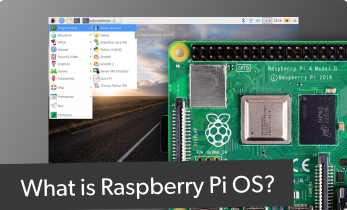
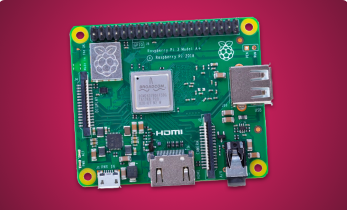






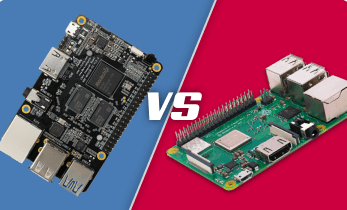


Leave your feedback...